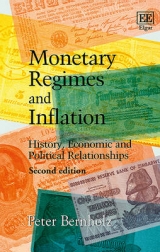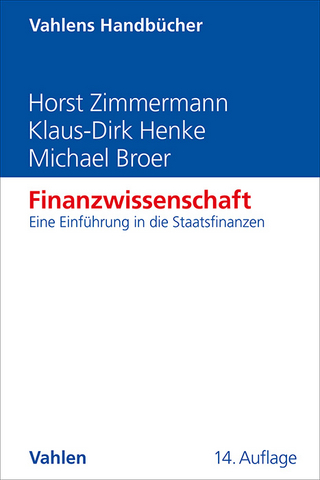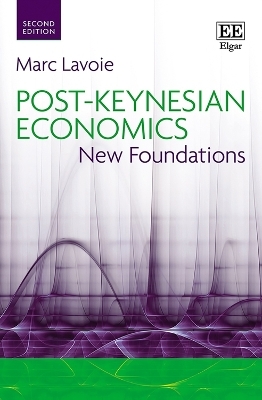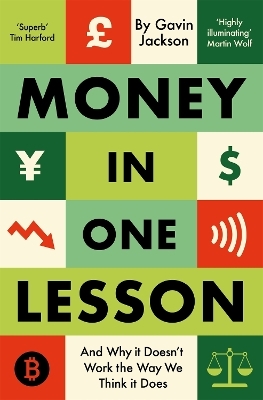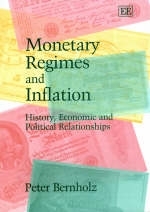
Monetary Regimes and Inflation
History, Economic and Political Relationships
Seiten
2003
Edward Elgar Publishing Ltd (Verlag)
978-1-84376-155-6 (ISBN)
Edward Elgar Publishing Ltd (Verlag)
978-1-84376-155-6 (ISBN)
- Titel ist leider vergriffen;
keine Neuauflage - Artikel merken
Zu diesem Artikel existiert eine Nachauflage
This book explores the characteristics of inflations, comparing historical cases from Roman times up to the modern day. High and moderate inflations caused by the inflationary bias of political systems and economic relationships – and the importance of different monetary regimes in containing them – are analysed.
This book explores the characteristics of inflations, comparing historical cases from Roman times up to the modern day. High and moderate inflations caused by the inflationary bias of political systems and economic relationships - and the importance of different monetary regimes in containing them - are analysed. Peter Bernholz demonstrates that certain macroeconomic traits have been stable characteristics of inflations over the centuries, and illustrates their causes; the development of real stock of money, real exchange rate, real budget deficit and of currency substitution. He goes on to explain that metallic monetary regimes allow substantial inflations by debasement - 4th century Roman Empire experiencing the highest of them - but are dwarfed by the experience of hyperinflations. These occurred only under discretionary paper money regimes. To demonstrate this and their characteristics, all twenty-nine hyperinflations are studied. In contrast to the existing literature, the book also examines political conditions that allow a return to stable monetary regimes, given the inflationary tendencies of political systems. Finally, economic measures and institutional reforms to end high and moderate inflations are discussed.
To enliven reading, experiences of contemporary observers like Hemingway and Stefan Zweig, who did not have any knowledge of the economics of inflation, have been inserted. Consequently their evidence is often more convincing than any econometric analysis. Formal mathematical analysis has been kept to a minimum. Exceptions for providing a deeper understanding can be left out without losing the thread of the argument.
Monetary Regimes and Inflation will appeal to a wide audience including students, economists, historians, political scientists and sociologists. The book will also be warmly welcomed by bankers, businessmen and politicians facing, and perhaps attempting to solve, the problems of inflation.
This book explores the characteristics of inflations, comparing historical cases from Roman times up to the modern day. High and moderate inflations caused by the inflationary bias of political systems and economic relationships - and the importance of different monetary regimes in containing them - are analysed. Peter Bernholz demonstrates that certain macroeconomic traits have been stable characteristics of inflations over the centuries, and illustrates their causes; the development of real stock of money, real exchange rate, real budget deficit and of currency substitution. He goes on to explain that metallic monetary regimes allow substantial inflations by debasement - 4th century Roman Empire experiencing the highest of them - but are dwarfed by the experience of hyperinflations. These occurred only under discretionary paper money regimes. To demonstrate this and their characteristics, all twenty-nine hyperinflations are studied. In contrast to the existing literature, the book also examines political conditions that allow a return to stable monetary regimes, given the inflationary tendencies of political systems. Finally, economic measures and institutional reforms to end high and moderate inflations are discussed.
To enliven reading, experiences of contemporary observers like Hemingway and Stefan Zweig, who did not have any knowledge of the economics of inflation, have been inserted. Consequently their evidence is often more convincing than any econometric analysis. Formal mathematical analysis has been kept to a minimum. Exceptions for providing a deeper understanding can be left out without losing the thread of the argument.
Monetary Regimes and Inflation will appeal to a wide audience including students, economists, historians, political scientists and sociologists. The book will also be warmly welcomed by bankers, businessmen and politicians facing, and perhaps attempting to solve, the problems of inflation.
Peter Bernholz, Professor Emeritus of Economics, Center for Economics and Business (WWZ), University of Basle, Switzerland
Contents: Preface 1. Introduction 2. Inflation and Monetary Regimes 3. Inflation Under Metallic Monetary Regimes 4. Moderate Paper Money Inflations 5. Characteristics of Hyperinflations 6. Currency Competition, Inflation, Gresham’s Law and Exchange Rate 7. Ending Mild or Moderate Inflations 8. Currency Reforms Ending Hyperinflations Index
| Erscheint lt. Verlag | 29.1.2003 |
|---|---|
| Verlagsort | Cheltenham |
| Sprache | englisch |
| Maße | 156 x 234 mm |
| Themenwelt | Wirtschaft ► Volkswirtschaftslehre ► Finanzwissenschaft |
| ISBN-10 | 1-84376-155-6 / 1843761556 |
| ISBN-13 | 978-1-84376-155-6 / 9781843761556 |
| Zustand | Neuware |
| Haben Sie eine Frage zum Produkt? |
Mehr entdecken
aus dem Bereich
aus dem Bereich
eine Einführung in die Staatsfinanzen
Buch | Hardcover (2024)
Vahlen (Verlag)
39,80 €
New Foundations
Buch | Softcover (2022)
Edward Elgar Publishing Ltd (Verlag)
64,75 €
and why it doesn't work the way we think it does
Buch | Softcover (2023)
Pan Books (Verlag)
13,70 €
